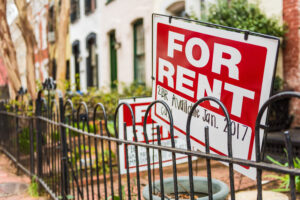Criminal records for rental decisions have become increasingly restricted over the past few years, and those efforts could be accelerated. As many local and state prisons and jails have released prisoners early during the coronavirus pandemic, there are concerns post-COVID that those previously incarcerated could become a protected class. As a protected class, tenant screening and the number of liabilities properties would have to shoulder (should something nefarious happen) would drastically change.
Criminals as a Protected Class: What Would Change

When it comes to current constraints on criminal records, the restrictiveness of each law is across the board. On the low end, some local governments only dictate when a criminal report can be processed (after a conditional offer of acceptance is extended) and the procedure after a denial (usually an individualized assessment). Areas like Cook County, Illinois restrict rental housing professionals and landlords to just 3 years of criminal records, while the industry standard is 7 years. The most extreme criminal record law we’ve seen to date is in Seattle, Washington – where property owners are prohibited from considering any criminal record information and can only screen the sex offender registry.
While it’s impossible to know the full extent in which a new protected class would have on criminal records, it’s not too far off to say that it would render criminal reports on tenant screening useless. After all, who would want to run criminal reports on their applicants if it could be seen as discriminatory?
If rental properties are discouraged or barred from screening rental applicants for criminal records, it raises the question: what about liabilities? Presently, property owners and managers are somewhat legally responsible for their renters’ safety. Tenant safety doesn’t just fall under maintaining the premises and upholding property security. You could also be liable if a renter commits a crime on the property or against another renter. If onsite staff are unable to screen applicants’ criminal past – would the property still be liable for what they legally could not know?
What you Can Do Now
In the age of quarantine, looking forward can be a daunting thing when the future is still so up in the air. So, here’s what you can do now.
Review your written rental criteria
The rental housing landscape is changing, and your leasing criteria should be adapted to meet those changes. After all, times are changing, and you don’t want to be exposed for outdated (potentially illegal) practices. When you’re reviewing your current rental criteria(s), be mindful of the following:
What you Can Do Now
In the age of quarantine, looking forward can be a daunting thing when the future is still so up in the air. So, here’s what you can do now.
Review your written rental criteria

The rental housing landscape is changing, and your leasing criteria should be adapted to meet those changes. After all, times are changing, and you don’t want to be exposed for outdated (potentially illegal) practices. When you’re reviewing your current rental criteria(s), be mindful of the following:
- Don’t make one rental criteria and apply it to all your properties.
If you own multiple rental properties, they may cater to different markets, be in different locations, and draw different types of renters. So why would you safeguard all of your properties with the same leasing criteria? Make sure you’re reviewing if your policies are appropriate for each property and make modifications if needed.
- Create standards for all decisions: Accepted, Conditional, and Denied.
While I’m sure you’ve already created leasing standards that help you determine who gets accepted and denied, make sure you’ve established criteria for conditional acceptances as well. ApplyConnect includes Accepted, conditional, and denied letter templates to help inform your applicant of your decision, but you’ll want to establish your criteria before using these.

- Don’t make one rental criteria and apply it to all your properties.
If you own multiple rental properties, they may cater to different markets, be in different locations, and draw different types of renters. So why would you safeguard all of your properties with the same leasing criteria? Make sure you’re reviewing if your policies are appropriate for each property and make modifications if needed.
- Create standards for all decisions: Accepted, Conditional, and Denied.
While I’m sure you’ve already created leasing standards that help you determine who gets accepted and denied, make sure you’ve established criteria for conditional acceptances as well. ApplyConnect includes Accepted, conditional, and denied letter templates to help inform your applicant of your decision, but you’ll want to establish your criteria before using these.
- Stay away from “bright-line standards.”
Bright-line standards are strict, black & white rules that do not allow applicants to provide additional information. For example, “no felonies” would be considered a bright-line standard as it does not consider the actual conviction in relation to housing. Instead, we suggest getting more specific – like using “no violent crime convictions”. For more information on avoiding bright-line standards, click here.
- Base your decisions on objective information.
Stay far, far away from incorporating subjective information into your rental standards. This can be your applicants’ social media presence, what their job is, what they look or dress like, or how well they clean their car. While this might seem like a no-brainer, you’d be surprised what is considered “objective.” To avoid discrimination claims, use objective information like tenant screening reports to back your criteria.
- Look towards the law.
As we said before, there’s been a significant attack on the use of criminal records and tenant screening over the years. In a short amount of time, you can go from having a legally sound leasing process to breaking the law, so you’ll want to be mindful of tenant screening updates. While ApplyConnect provides updates on laws impacting screening, not every tenant screening service does.
Make sure your criteria is being applied equally
If we’re talking about a potential discrimination case, this is the area you should be the most proactive. Make sure your criteria is written down and readily available. If an applicant asks, be transparent about your standards and how you come to your final rental decision.

Trust your leasing process
It’s important to trust your leasing process. If you feel like your standards aren’t working for a particular applicant or unit – you cannot bend the rules. This not only defeats the purpose of your leasing standards but can be seen as discriminatory. If appropriate, formally re-review your standards for effectiveness and apply your new standards to all your applicants moving forward.
Whether or not you believe those previously incarcerated should become a protected class, it’s important to make sure your rental standards and leasing process is being applied to all your rental applicants equally. With the right written standards and objective tenant screening source, you don’t have to be afraid of applicants with a criminal record.








